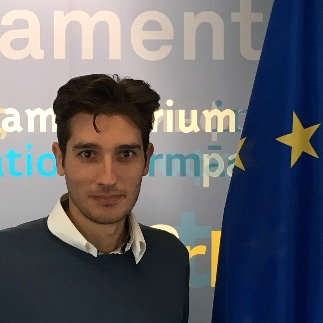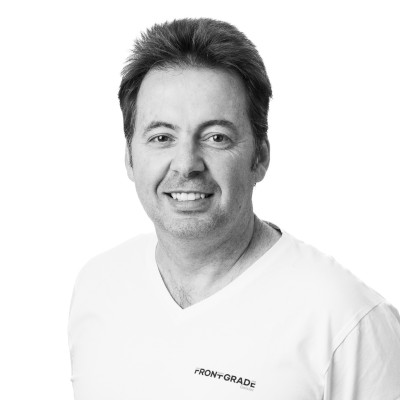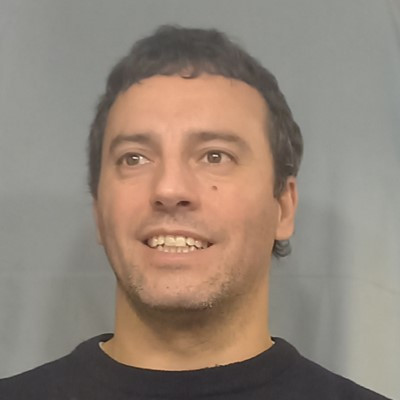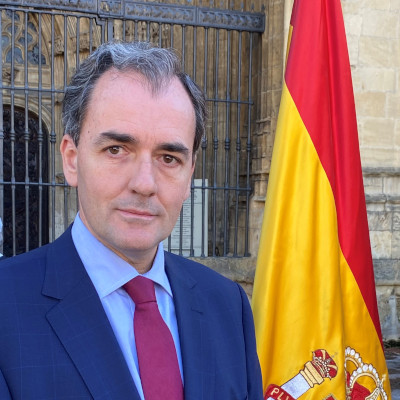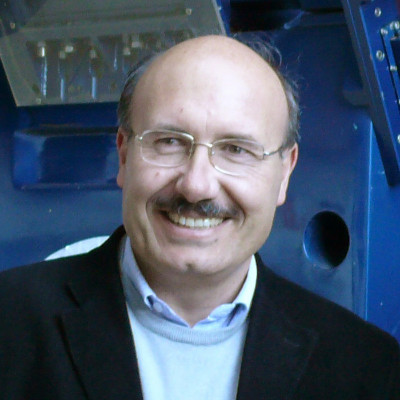Tuesday 17:15, 17th September
Abstract
Ensuring EU space industry competitiveness is crucial for maintaining leadership in space, economy, and EU technological sovereignty. The recent geopolitical context has underscored the urgency of reinforcing EU space industry, related supply chains therefore reducing technological dependencies. The European Commission is taking several steps to enhance EU resilience and strategic technological autonomy by implementing space technology developments which respond to current and new EU space missions e.g. IRIS2, Copernicus, Galileo, SST. Within the frame of this presentation, Fabio Vitobello from the General Directorate for Defence Industry and Space (DG-DEFIS) of the European Commission will present the EU prospective and space strategy in the area of critical technologies and EEE components for space applications. It will be given a brief overview of recent actions and activities initiated and managed by the European Commission.
Biography
Fabio Vitobello received his Electronics Engineering degree cum laude from the University of Padova, in Italy and a double degree from Illinois Institute of Technology (IIT), Chicago, USA where he worked as a Researcher on GaN technologies until 2007. In 2008 he joined the Components Section of the European Space Agency (ESA) where he worked six years following R&D activities aiming at developing a European GaN process suitable for space mission insertion. Afterwards he joined Infineon Technologies where he worked as quality manager of the RF GaN process. Since 2015 he joined the Research Executive Agency of the European Commission. First as Space Programme Officer managing and implementing Space EEE projects funded by EU, in particular managing research and development activities related to space EEE components. Since 2022, he became Space Policy Officer at European Commission directorate general for Defence Industry and Space (DG-DEFIS). He is responsible for defining EU space policy and R&D programme in the area of space critical technologies for EU non-dependence and EEE components.
Wednesday 8:30, 18th September
Abstract
The location and characteristics of the Canary Islands make them a unique site for environmental studies. The environmental radioactivity laboratory of the University of La Laguna, Tenerife, has overseen the radiological monitoring of the Western Canary Islands since 1998. It is currently part of the national radiological monitoring network run by the Spanish National Nuclear Safety Organisation (CSN). During the 25 years of operation, this laboratory has combined the monitoring activities with research into the behavior of radionuclides in the environment. This has led to numerous international publications. Some of the most interesting research topics that have been and are currently investigated are:
- The impact of the volcanic origin of the islands on the concentrations of natural radionuclides:
- Increase of radioactivity in ground waters due to the geological activity of the islands.
- Elevated radon concentrations in volcanic caves.
- Radiological impact of the eruption that took place on the island of La Palma in 2021.
- The long-range transport of radionuclides in the atmosphere:
- Impact of Saharan dust storms into the concentrations of radionuclides in the atmosphere (is there a contribution from the French nuclear tests carried out in Algeria in the 60s?)
- Atmospheric deposition of radionuclides from the Chernobyl nuclear accident on the soils of the Canary Islands.
- Variations in the concentrations of a cosmic-ray-induced radionuclide in surface aerosols (Single Event Effects in the stratosphere).
- Measurement of radionuclides released by the Fukushima nuclear accident in surface aerosols.
In this presentation, the author will provide a highlight of the most surprising results obtained over the years. In addition, the author will talk about the research possibilities that the new aerosol monitoring station at Izaña (2km over the sea level, a site considered to be in the free troposphere) brings to this site.
Biography
Francisco Javier (Paco) Hernández Suárez obtained his MPHYs in physics with environmental studies at the University of Sussex (UK) in 1997 and a PhD in physics at the University of Uppsala (Sweden) in 2002. He started collaborating with the Environmental Radioactivity laboratory of the University of La Laguna (FIMERALL) in 1998, during his PhD, and later joined this lab as a postdoc researcher. There he authored numerous scientific publications, especially in the field of radiation in atmospheric aerosols. In 2008, he joined Airbus Defense and Space in the UK as a radiation engineer. During this time, he participated in various satellite developments such as Hylas, Alphasat, Sentinel, Gaia, Aeolus, etc. and was involved in the radiation testing of EEE components (TID, TNID and SEE). In 2008, he joined Frontgrade Gaisler AB (Sweden) as part of its EEE supply chain team, where he has been involved in the manufacturing, screening and qualification of processor components for space applications. Since 2021, he has also participated, as a hobby, in the research activities of FIMERALL and the Environmental Radioactivity team from University of Malaga.
Thursday 8:30, 19th September
Abstract
Before the advent of the so-called New Space era, the National Institute of Aerospace Technology of Spain (INTA) started an internal program for the development of small, low-cost, yet high-reliability satellites. This Small Satellites Program allowed young engineering groups to gain flight experience in the development and operation of compact space systems. At present, this has evolved to a Clusters/Constellations Program, with our 3 first satellites for formation flying demonstration launched in October 2023. Later, that experience allowed us to enter the Planetary Exploration arena by joining different Mars exploration missions for which smart scientific instruments were developed, including the recent Mars 2020, the ill-fated Schiaparelli lander or the ExoMars 2022 mission now re-scheduled for the end of the decade. We also carry-on different activities for the development of small Martian probes to deploy environmental networks on Mars. The Canary Islands played an important role in early space activities since the 60’s. With the establishment of the NASA Apollo’s satellite tracking station in Maspalomas (Gran Canaria), Spain through INTA participated in the U.S. space race to Moon exploration. In 1975 the Instituto Astrofísico de Canarias (IAC) was established in Tenerife and La Palma islands. This Institute is a key European contributor to Astrophysics missions, with ground observations and space hardware in the last years. The ALISIO-1, the first Canary Islands satellite, manufactured with payloads and technology developed by the IAC and its Space Technology Centers, was recently launched by Space X. This effort concentrated important space industrial contributions. Canary Islands latitude, same that Cape Canaveral, have been appointed as privileged area for access to space. In 1997 the MINISAT 01, the first satellite of the INTA Small Satellites Program, was launched with a Pegasus rocket from a Lockheed L-1011 at 11.000 after taking off from Gran Canaria Island. An increasing activity around the launch capabilities, with frequent proposals and activities focused on sea rocket pads, balloon-rocket systems or even ground facilities. There are plans to accelerate the role of the Canary Islands in the Spanish Space arena thanks to the coordination of the regional and the national Governments. Both Administrations will work together to potentiate the aerospace singularity of the Canary Islands. A general view of all this will be offered in this talk.
Biography
Ignacio Arruego is a senior space systems engineer at INTA, where he heads the Space Payloads Department. He has worked in the Small Satellites Program of INTA since 1999, being involved in 5 different LEO satellites, as well as a Russian capsule. Since 2009 he has worked in the field of Mars exploration, being Project Manager of the Spanish contribution to the Mars MetNet Lander, responsible for the Radiation and Dust Sensor that operates on Mars onboard Perseverance rover, and PI or Co-PI of 4 different sensors onboard the Schiaparelli lander and the ExoMars 2022 Surface Platform.
Héctor Guerrero is a university professor, entrepreneur, and space communicator, he has managed R&D at both national and international levels. As a Senior Scientist of Defense at INTA, he participated in projects such as NANOSAT, ROSETTA, and Mars exploration. He spent 4 years working on space policy and research at the European Commission. Within NATO, he is a member of the High-Level Advisory Committee on Emerging and Disruptive Technologies. Currently, he directs the Technical Office of the Space Commissioner for the Aerospace PERTE, being Deputy Director General at the Ministry of Science and Innovation.
Friday 9:00, 20th September
Abstract
The Observatories of the Instituto de Astrofísica de Canarias (in Tenerife and La Palma) are internationally recognised among the best in the world for astrophysical research. They host about 40 telescopic facilities from academic institutions of 20 countries, including some of the largest Solar Telescopes and Cherenkov Telescopes and the largest optical/IR telescope in the world, the Gran Telescopio Canarias. These research infrastructures were built to explore the physics of the Sun, the properties of terrestrial planes in exoplanetary systems, the physics of the stars, the interstellar medium and the formation and evolution of galaxies, the study of the intriguing stellar and supermassive black holes and the origin of the most energetic phenomena in the Universe, neutron star mergers, supernovas and the Big Bang. I will review some of the most impressive scientific results achieved during the last decades in these fields and the plans to enhance significantly the current observational capacities.
Biography
Rafael Rebolo is a Physics Research Professor at the National Council for Research in Spain (CSIC). He has been Director of the Instituto de Astrofísica de Canarias (IAC), the largest Astrophysics Research center in Spain, and external Professor at the Max Planck Institute for Astronomy in Heidelberg. He coordinated the participation of the IAC in the ESA Cosmology space mission Planck and is one of the two national coordinators for the Euclid space mission (ESA) to explore the nature of dark energy. Leader or co-leader of several experiments on Cosmic Microwave Background studies (QUIJOTE) and spectrographs to search for terrestrial planets (ESPRESSO). His team discovered the first brown dwarfs, intermediate objects between stars and giant planets. He was awarded several research awards including the Jules Janssen (France) and the Spain National Prize on Physics Research.
